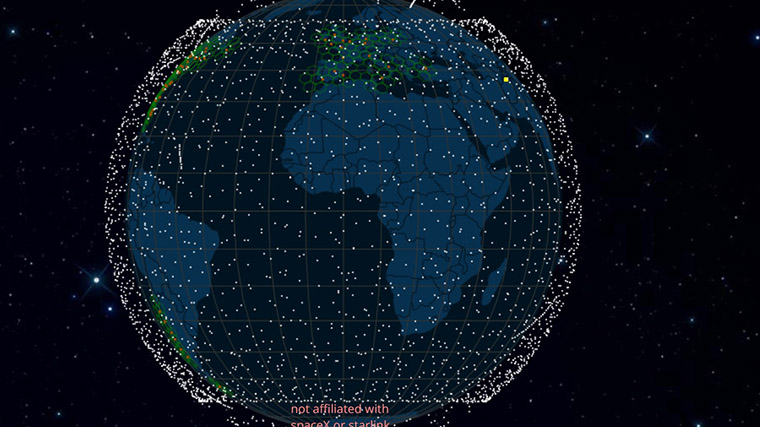Starlink satellites can interfere with observations even by telescopes that are protected by radio silence zones.
Experts have long warned about the impact on astronomy of mega-constellations of low-orbit satellites such as SpaceX’s Starlink. The streaks these satellites leave on astronomical images interfere with observations in telescopes even in the most remote locations. The reflection of sunlight from these satellites can cause unwanted brightening of the night sky, even in areas far from urban light pollution. And the radio waves that these satellites use to communicate can interfere with observations by sensitive radio telescopes.
Thanks to a new study by researchers using the Low-Frequency Array Telescope (LOFAR) in the Netherlands, a new unexpected source of scientific disturbance has emerged: radiation from onboard electronics inside Starlink satellites. The radio frequencies that LOFAR is designed to detect are also emitted by Starlink satellites. Radiation in the frequency range of 110 to 188 MHz has been detected from 47 of the 68 satellites observed. And the larger the constellation of satellites, the greater the polluting effect from them.
Interestingly, SpaceX is not breaking any regulations. This type of radiation is governed by regulations for ground-based devices, not satellites.
SpaceX has already launched over 4,000 Starlink satellites and has already received regulatory approval to deploy 12,000 broadband satellites and has applied to launch another 30,000 Starlink craft.
What will be the continuation of this story?
Will Elon Musk be banned from launching satellites or will astronomy scientists learn how to filter interference from Starlink or will there be more interesting solutions to the problem?
Image credit:
https://satellitemap.space/
